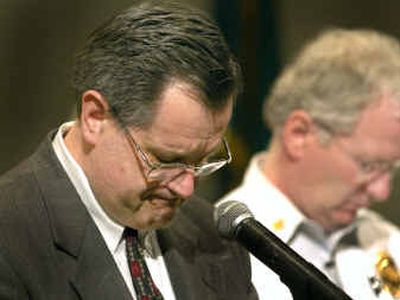Rupture response to get review to improve disaster planning

Lessons from Monday’s wastewater treatment plant accident should be used to improve response to larger disasters, says Bill Edstrom, Eastern Washington’s bioterrorism surveillance coordinator.
“You want to learn from your disaster drills, but you also want to learn from your smaller disasters,” Edstrom said Tuesday.
For large disasters, the region’s response agencies have plans in place to set up a joint emergency command center. At the command center, decisions would be made about how to communicate health and safety alerts to the public. For example, one spokesperson might be selected to talk to the news media. Joint decisions might be made among agencies about what the public needed to know.
Fire Chief Bobby Williams said a joint emergency command center was not activated Monday. The risk to public health seemed minimal by the time the idea was discussed. And, by then, information was getting out to the public from reporters and photographers on the scene, Williams said.
How agencies communicated with the public and among themselves will be critiqued, Williams said.
For example, misinformation, including grossly inflated reports about how much sewage was in the river, circulated early among some agencies.
The first call Spokane Regional Health District received about the accident was from Stevens County. An environmental health supervisor at Northeast Tri County Health District in Colville had received a call from the Stevens County Sheriff’s Department.
That department had heard Spokane County scanner traffic about the accident and knew sewage could be headed for Lake Spokane (Long Lake), which is partially in Stevens County. The Sheriff’s Department called the Northeast Tri County Health District, which called Spokane Regional Health District. Initially, the amount of gallons of the spill was incorrect.
“The miscommunication got cleared up fairly rapidly,” said Carol Villers, administrator of Northeast Tri County Health District. “We’ve been doing some of the tabletop exercises (on disaster response). That pulls it higher up on your radar.”